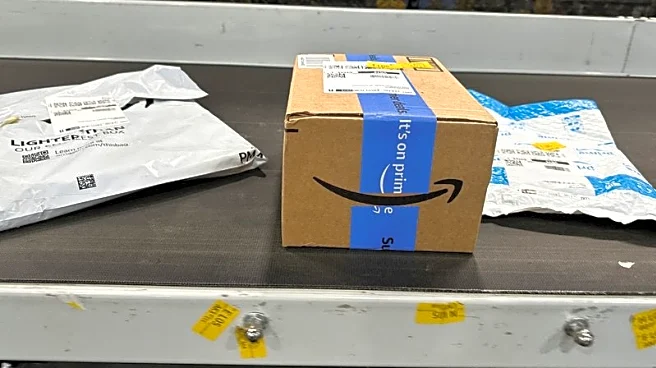What's Happening?
Walmart is implementing a strategic shift in its inventory management to address the challenges posed by tariffs and changing consumer spending patterns. According to the Logistics Management Index (LMI), Walmart plans to focus on higher volumes of sure-sellers while reducing risks associated with bulk purchases of less popular goods. This approach allows Walmart to place orders earlier and benefit from quantity discounts, potentially mitigating price increases for consumers. Smaller retailers, however, are struggling to compete with larger firms due to higher inventory costs and tariff impacts. The CNBC Supply Chain survey indicates a pullback in consumer spending, particularly among lower-income brackets, as tariffs on Chinese goods affect pricing strategies. Retailers are adjusting their supply chains and order patterns, with some reducing inventory due to economic uncertainties.
Why It's Important?
The shift in Walmart's inventory strategy highlights the broader impact of tariffs on U.S. retailers and consumer spending. By focusing on products that sell quickly, Walmart aims to maintain competitive pricing and avoid passing tariff costs onto consumers. This strategy could influence other retailers to adopt similar approaches, potentially stabilizing prices in the face of economic uncertainties. Smaller retailers may face challenges in maintaining competitive pricing, which could lead to a market shift favoring larger firms. The pullback in consumer spending, particularly among lower-income groups, suggests potential economic strain and shifts in purchasing behavior, impacting retail sales and economic growth.
What's Next?
Retailers are expected to continue adjusting their inventory strategies as they navigate tariff impacts and changing consumer spending patterns. The replenishment of holiday inventory will begin in September and October, with stores stocking shelves in late October and early November. Retailers may focus on core products and assortments that can be easily replenished, while trimming down experimental launches. The lack of ocean cargo from China indicates potential slowdowns in imports, affecting holiday inventory levels. Retailers will need to monitor consumer spending trends and adjust pricing strategies to remain competitive.
Beyond the Headlines
The ongoing tariff challenges and inventory adjustments may lead to long-term shifts in retail strategies, emphasizing efficiency and cost management. Retailers may increasingly rely on data-driven approaches to optimize inventory and pricing, potentially reshaping the retail landscape. The economic uncertainties could drive innovation in supply chain management and consumer engagement, as retailers seek to balance cost pressures with consumer demand.













